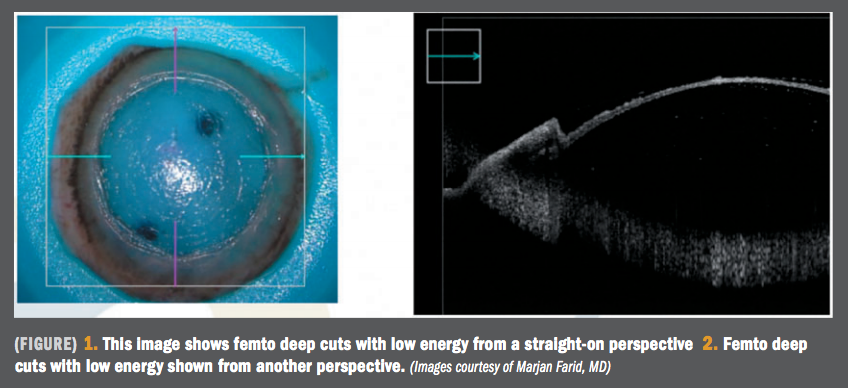Article
Bringing DALK application to forefront for corneal surgeons
Author(s):
Innovations in procedure may overcome current technical difficulty

Intraoperative OCT and the femtosecond laser may make deep anterior lamellar keratoplasty more consistently predictable.
Reviewed by Marjan Farid, MD
Deep anterior lamellar keratoplasty (DALK) has recognized advantages compared with penetrating keratoplasty when transplantation is needed in eyes with anterior corneal disease.
However, the difficulty of baring the Descemet’s membrane without perforating it using the big-bubble technique has limited DALK uptake by corneal surgeons.
Intraoperative optical coherence tomography (OCT)-combined with the use of the femtosecond laser-can enable successful completion of the big-bubble dissection by improving visualization and predictability of the depth of the stromal layers.
In the future, the femtosecond laser may also be used to precisely make a smooth deep lamellar dissection, thereby eliminating the need for the big-bubble, said Marjan Farid, MD, professor of ophthalmology, and director of Cornea, Cataract and Refractive Surgery, Gavin Herbert Eye Institute, University of California, Irvine, CA.
“Further exploration and advocacy are needed to bring these innovations in technology into the hands of every corneal surgeon,” Dr. Farid said.
Dr. Farid noted that application of the femtosecond laser to keratoplasty was pioneered by Roger Steinert, MD, at the University of California, Irvine.
The DALK technique involves use of the laser to create a zig-zag incision in both the host and donor tissue. The laser is programmed to perform a ring lamellar cut at a depth of 300 μm and with an inner diameter of 3 mm.
The technique allows the precise removal of 300 μm of the anterior stroma and enables visualization of the posterior cornea layers, thereby allowing more accurate needle insertion, and air injection.
The zig-zag cut also allows for better alignment of the graft and recipient tissues. Its use is associated with less astigmatism, higher-order aberrations, faster and stronger wound healing, and quicker visual recovery, Dr. Farid said.
Intraoperative OCT guidance offers another approach for enabling accurate needle placement when creating the big-bubble. Dr. Farid demonstrated its application with a video provided by Namrata Sharma, MD, Delhi, India.
“With intraoperative OCT, the surgeon is able to visualize Descemet’s membrane through the entire process, which decreases the risk of perforation, and also help with placement of viscoelastic and positioning of the scissors for the final cut,” she said.
RELATED: Get the ABCs of DSO
Precise depth
Although the femtosecond laser can cut to a precise depth, the quality of the cut achieved using the laser for deep lamellar dissection has limited its application in DALK.
Dr. Farid explained that the organization of the collagen fibers differs in the posterior and anterior cornea, and initial efforts to use a femtosecond laser to create a smooth deeper cut resulted in a surface with ridges and irregularities that would degrade optical quality.
Audrey Talley-Rostov, MD, Seattle, has teamed up with Dr. Farid to work on overcoming this problem by adjusting the laser energy, spot size, and spot separation on newer-generation lasers.
Dr. Farid presented evidence showing that a smooth cut was created using the technique in a human cadaver eye.
RELATED: When to consider corneal crosslinking treatment
Disclosures:
Marjan Farid, MD
E: mfarid@uci.eduDr. Farid is a consultant/advisor to Johnson & Johnson Vision.





